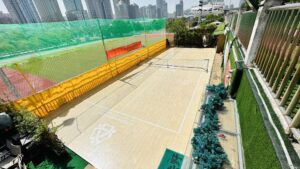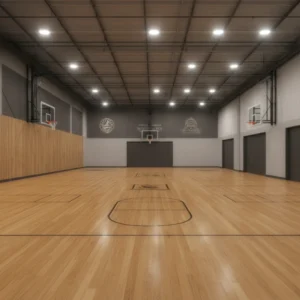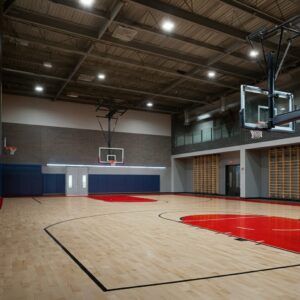Whether you’re an aspiring athlete, a seasoned coach, or someone who builds basketball courts, understanding the dimensions of a basketball court is a game-changer. It’s not just about measurements; it’s about knowing how these dimensions influence your gameplay, strategy, and training.
This blog will break down basketball court dimensions used in professional leagues, high schools, and more. We’ll also explore the role of innovative flooring solutions, like the Copo biomass sport floor, that elevate performance while enhancing safety.
By the end of this post, you’ll see how knowledge of court dimensions and advanced flooring can improve your game and guide better decisions for athletes and facilities alike.
Regulation Basketball Court Dimensions for Professional Play
Professional basketball courts follow strict guidelines, especially those regulated by FIBA (International Basketball Federation). These dimensions ensure consistency and fairness in global competitions.
- Court Length and Width
FIBA basketball courts measure 28 meters long and 15 meters wide, offering players ample space for dynamic gameplay. The size challenges athletes to master speed, movement, and positioning throughout the game.
- Backboard and Hoop Height
The rim stands at 10 feet high, while the backboard is 6 feet wide and 3.5 feet tall. Every dunk, free throw, and shot requires players to understand these dimensions and adjust their form accordingly.
- Key Measurements
The free-throw line sits 4.6 meters (15 feet) from the backboard. The three-point line is 6.75 meters (22.15 feet) away but extends to 6.6 meters in the corners.
Why It Matters
These measurements set the stage for fast-paced games. Professional courts demand precision in shooting and passing, testing players’ skills in ways that high school or recreational courts might not. Understanding these rules can help players adapt as they transition through different competition levels.
Standard High School Court Dimensions and Key Differences
High school basketball courts are smaller than their professional counterparts, typically measuring 26 meters long and 14 meters wide. While the slight reduction in size might seem insignificant, it has a noticeable impact on gameplay.
- Smaller Courts, Different Strategies
The reduced space limits movement, making fast breaks more challenging. Players need to be more efficient in their positioning and ball movement.
- Three-Point Line
High school courts place the three-point line at just 6.32 meters (20.75 feet), which allows young athletes to develop shooting accuracy more gradually.
Why It Matters
Understanding these differences helps coaches tailor their training programs and empowers players to modify their strategies as they move between different-sized courts during their careers.
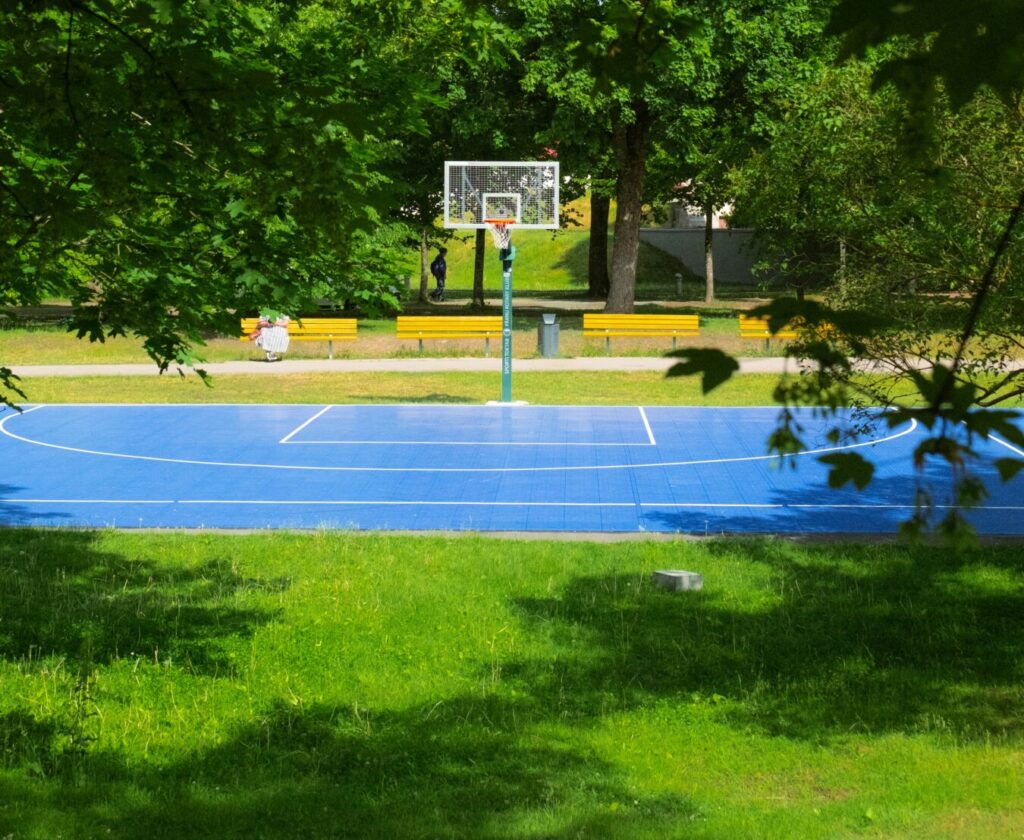
Three-Point Line Distance and Its Impact on Gameplay Strategy
The three-point line is critical in today’s basketball strategy. It rewards players who can shoot with accuracy from long distances, stretching defenses and creating space for inside plays.
- Evolution of the Three-Point Line
Initially introduced in the late 1960s, the three-point line was designed to add excitement to the game. Over the years, it has become a central focus in basketball strategies worldwide.
- Modern Game Dynamics
Teams rely heavily on shooting guards and small forwards to provide three-point threats. Players like Stephen Curry have revolutionized the game, showing how mastering the three-point line can entirely change a team’s offensive strategy.
Why It Matters
For players, mastering the three-point line means better scoring opportunities. Coaches, on the other hand, must design plays to exploit gaps in the defense created by long-range threats.
Dimensions for the Free-Throw Lane and Its Strategic Importance
The free-throw lane, also called the key, measures 4.9 meters wide. It serves as one of the most crucial areas of the court for both offense and defense.
- Positioning and Defense
Defensive players often use this space to box out their opponents during rebounds. Using the lane strategically can make or break close games.
- Offensive Moves
On offense, positioning within the lane allows players to optimize scoring opportunities, whether through layups, hooks, or cutting passes.
Why It Matters
By mastering their movement within the key, players can gain a significant advantage in both defense and offense. Facility designers also need to understand the importance of the key’s dimensions to ensure proper court setup.
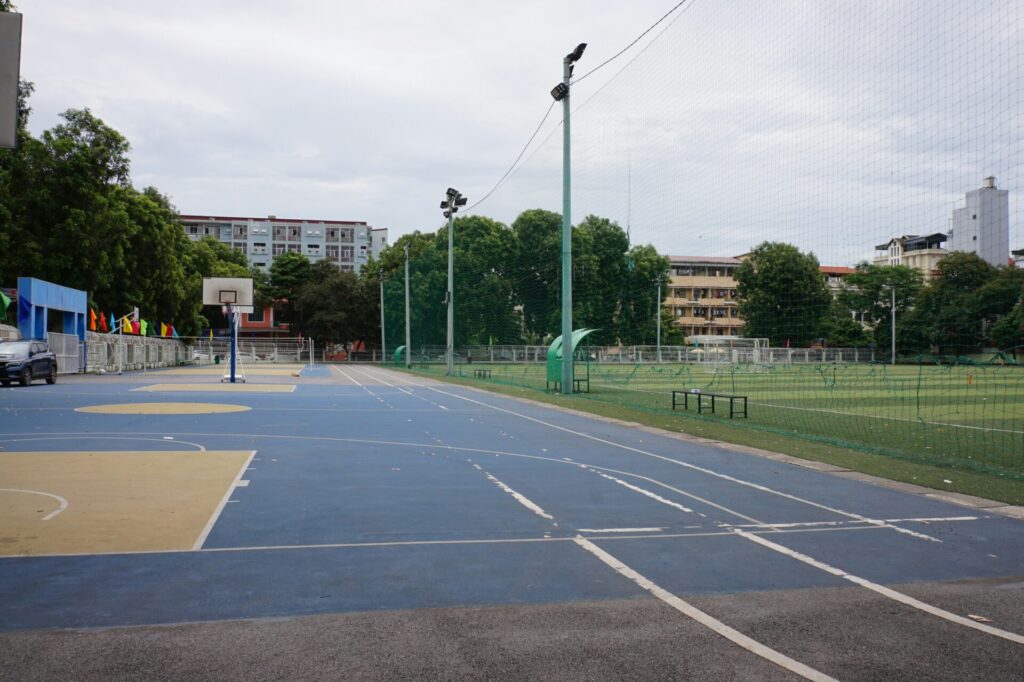
Sideline and Baseline Measurements Affecting Player Positioning
- Sidelines
The sidelines span the 28-meter length of the court and define the boundaries. Understanding sideline proximity is essential for plays like fast breaks and inbounds passes.
- Baselines
The 15-meter baselines serve as both scoring zones and vital areas for defense.
Why It Matters
Basketball is a game of space management. A player aware of sideline and baseline boundaries gains better court awareness, resulting in fewer turnovers and more strategic plays.
The Role of the Copo Biomass Sport Floor
An often-overlooked factor in basketball performance is the court flooring. Copo Sports is redefining basketball courts with its Copo biomass sport floor, a FIBA-certified Level 1 flooring that’s perfect for 3×3 and outdoor courts.
- Shock Absorption
Protect players from injuries with top-tier shock absorption. Say goodbye to achy joints after hours on the court.
- Minimal Skin Abrasions
Designed to minimize skin damage, making it perfect for intensive matches and training sessions.
- Environmentally Conscious
With low TVOC emissions and reduced hazardous substances, Copo ensures its products are as kind to the planet as they are to athletes.
- Unparalleled Durability
Long-lasting color retention and dimensional stability in all temperatures mean these floors hold up against any climate or intense use.
Copo Courts Balancing Durability and Performance
Beyond their technical specs, Copo courts deliver functionality and style for outdoor sports.
- Weather Resistance
Rainproof, rotproof, and insect-proof features ensure low-maintenance durability for up to 15 years.
- Customizable Options
Choose from diverse colors, textures, and materials that match your aesthetic and functional needs.
- Water Seepage
Advanced seepage systems keep courts dry for uninterrupted games.
Player Protection with Copo Flooring
Copo’s priority is athlete safety:
- Slip Resistance
Keep players safe even in wet or high-action conditions.
- High Impact Absorption
Reduce the risk of injuries with top-notch shock absorbency.
- Durable and Eco-Friendly
Sustainable flooring without compromising reliability.
Apply Court Knowledge to Improve Performance
Knowing basketball court dimensions gives players and coaches a competitive edge. Combined with Copo Sports’ innovative flooring solutions, you’ll not only enhance strategy but also ensure a safer and more enjoyable game for everyone on the court.
Are you ready to level up your court? Contact CopoSports today for expert guidance and premium basketball flooring solutions tailored to your needs. Together, we can build courts that inspire greatness.


